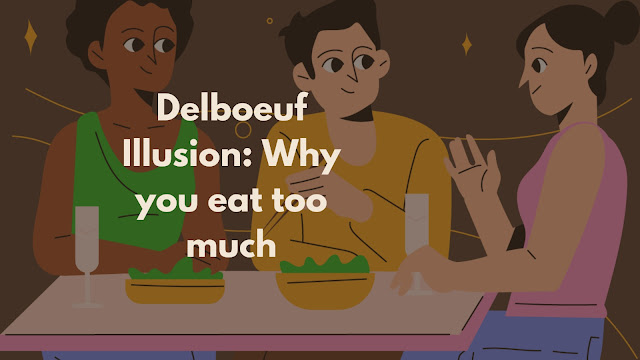Introduction Life does not require a perfect moment to begin again. It doesn’t wait for a new year, a milestone birthday, or a dramatic turning point. Often, a restart begins with something much simpler — a decision that you deserve better than the life you’ve been settling for. Everyone goes through periods where life feels stuck, heavy, or directionless. Maybe you’re recovering from a setback, navigating a major change, or simply feeling disconnected from your purpose. Regardless of the reason, restarting your life is always possible, and it’s never too late. A reset isn’t about escaping your past — it’s about reclaiming your future. The steps below offer a practical, grounded path to rebuild your identity, your habits, and your direction with clarity and intention. 1. Accept Where You Are You cannot restart if you keep denying your reality. The first step toward a new beginning is honest acceptance. This doesn’t mean blaming yourself for ever...
Introduction
Have you ever wondered why you might be consuming more food than you actually need? The answer may lie in a fascinating psychological phenomenon known as the Delboeuf Illusion. In this blog, we'll delve into the intricacies of the Delboeuf Illusion and explore its role in influencing our eating habits.Understanding the Delboeuf Illusion:
The Delboeuf Illusion psychology concept, revolves around the perception of size and the impact it has on our judgments. Named after the Belgian psychologist Joseph Remi Leopold Delboeuf, this optical illusion manifests when we misjudge the size of objects, particularly when they are surrounded by a larger or smaller context.
How does it relate to eating habits?
When it comes to our plates and portion sizes, the Delboeuf Illusion can significantly influence our perception. Imagine a scenario where you are presented with a smaller portion on a large plate versus the same portion on a smaller plate. The illusion tricks our minds into thinking that the larger plate holds a smaller amount of food, leading us to subconsciously believe that we need more to feel satisfied.Examples of the Delboeuf Illusion in Action:
To illustrate this phenomenon with concrete Delboeuf illusion examples, let's consider a classic case. Picture a dinner plate with a standard serving of spaghetti. Place this plate on a larger platter, and suddenly, the spaghetti appears minuscule. Now, transfer the same serving to a smaller plate, and voila! The portion looks more substantial.
Restaurants often strategically leverage the Delboeuf Illusion to influence customer behavior. By serving meals on larger plates, they create an optical illusion that encourages patrons to perceive their portions as smaller, prompting them to order more food. This subtle manipulation of visual cues highlights how the Delboeuf Illusion can play a role not only in our perception of portion sizes at home but also in shaping our choices when dining out.
Moreover, the illusion extends beyond plate size. Consider the role of serving bowls and glasses in influencing our consumption. A bowl filled halfway may seem emptier on a larger table, leading us to ladle on more than we actually need. Similarly, a tall glass can make a standard beverage appear smaller, potentially prompting us to pour ourselves another serving.
Practical Tips to Counteract the Delboeuf Illusion:
Now that we understand the impact of the Delboeuf Illusion on our eating behavior, let's explore practical strategies to counteract its effects:
1. Mindful Plating: Be conscious of portion sizes and choose smaller plates when serving meals. This simple adjustment can help align your perception with the actual quantity of food you need.
2. Awareness in Restaurants: When dining out, pay attention to plate sizes. If you notice that a restaurant tends to use larger plates, consider sharing a dish or ordering a smaller portion to avoid overeating.
3. Use Visual Cues: Instead of relying solely on plate size, pay attention to visual cues that indicate portion sizes. This includes using measuring tools or familiar objects to gauge appropriate serving sizes.
How the Delboeuf Illusion Affects Overeating:
The implications of the Delboeuf Illusion on our eating habits are profound. Studies suggest that individuals are more likely to overeat when faced with larger plates, as the illusion tricks them into believing they need larger portions to satisfy their hunger.Moreover, the illusion extends beyond plate size. Consider the role of serving bowls and glasses in influencing our consumption. A bowl filled halfway may seem emptier on a larger table, leading us to ladle on more than we actually need. Similarly, a tall glass can make a standard beverage appear smaller, potentially prompting us to pour ourselves another serving.
Practical Tips to Counteract the Delboeuf Illusion:
Now that we understand the impact of the Delboeuf Illusion on our eating behavior, let's explore practical strategies to counteract its effects:
1. Mindful Plating: Be conscious of portion sizes and choose smaller plates when serving meals. This simple adjustment can help align your perception with the actual quantity of food you need.
2. Awareness in Restaurants: When dining out, pay attention to plate sizes. If you notice that a restaurant tends to use larger plates, consider sharing a dish or ordering a smaller portion to avoid overeating.
3. Use Visual Cues: Instead of relying solely on plate size, pay attention to visual cues that indicate portion sizes. This includes using measuring tools or familiar objects to gauge appropriate serving sizes.


Comments
Post a Comment
Please do not add any spam link in the comment box